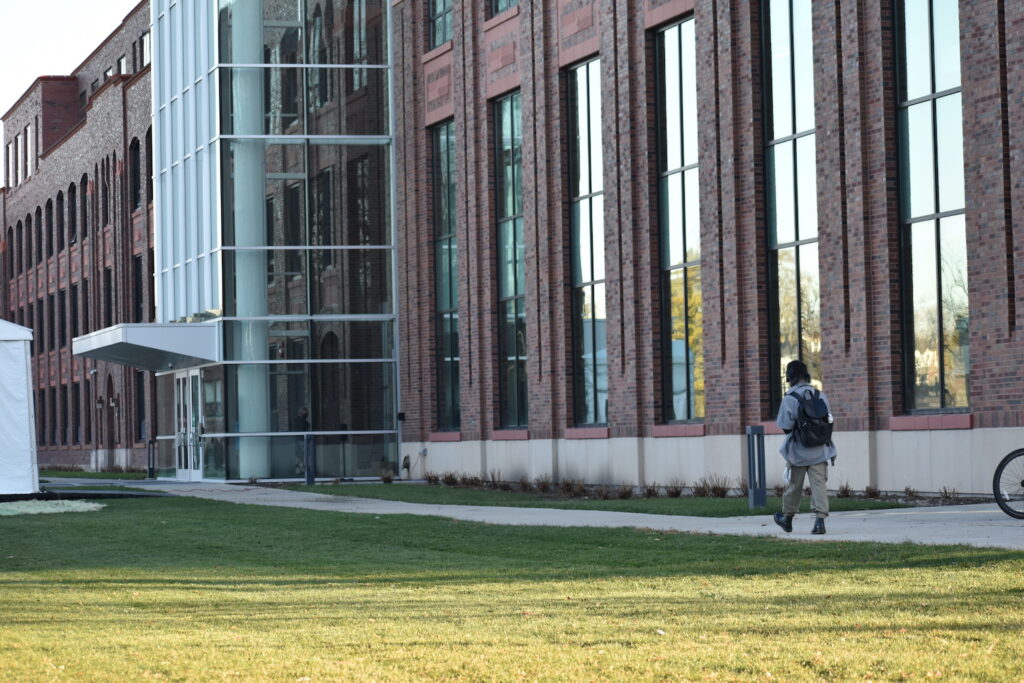
Following months of talks, Winnetka council introduces measures to regulate lakefront construction
Amid discussions surrounding lakefront property, including concerns about environmental protections and public access, the Winnetka Village Council is moving forward with amendments designed to increase its authority over its shoreline.
The four amendments, which trustees advanced one at a time, were the only items discussed during a nearly three-and-a-half-hour Village Council meeting on Thursday, July 6.
The proposals are the latest update after months of work by the trustees, dating back to a January study session when officials from different regulatory agencies spoke about their roles in lakefront regulation.
The January meeting was sparked by a polarizing — and incomplete — land exchange agreement between the Winnetka Park District and the Ishbia family. The Ishbias are also in the middle of a major overhaul of property just south of Centennial Park, where they have razed multiple homes in efforts to build a new one.
The projects had many residents and officials wondering what the Village could or should do to regulate lakefront development.
Village President Chris Rintz stressed on Thursday that the Village Council was only going to be voting on introducing the four amendments. He said both introduction and adoption requires a unanimous council vote, which includes his vote.
“And I’m saying right now that I am not supporting the adoption of any of these ordinances this evening,” Rintz said, adding that the adoption won’t be on the board’s agenda until the July 18 regular council meeting.
Of the four amendments, the one that generated the most discussion was a proposed nine-month moratorium on new construction in what was referred to as the “steep slope” zone along the Lake Michigan bluffs. Council documents defined a steep slope as an area where vertical and horizontal dimensions are greater than 10 percent, while the zone is listed as “all land between the bottom of a Steep Slope and the top of the Steep Slope, and also the land that is 40 feet landward from the top of a Steep Slope.”
While he didn’t mention the Ishbia family by name, Rintz said this proposed amendment came forward because the Village was contacted by multiple residents regarding “the property south of Centennial” sharing concerns about what that work was doing to the bluffs.
“We want to make sure that these sort of activities are paid close attention to, because we don’t know as a council whether this is a good thing or a bad thing for the bluffs,” Rintz said. “We don’t know.”
He also clarified that, if the moratorium passes, it would not impact projects that have already been approved nor would it impact projects already in progress, which include the Ishbia property.
Multiple residents spoke on the proposed moratorium, with many sharing similar concerns of it diminishing property value by preventing work from getting done, saying the definition of “construction activity” by the village is too broad. Council documents say that definition includes “the adding, dumping, grading, or removing of soil, dirt, sand, rocks, fill, or vegetation.”
Others said they were concerned that the moratorium was an attempt by the village to control private property.
But the most frequent concern brought up by residents was defining the steep slope zone as 40 feet into the land from the top of the slope.
Leann Pope was one of the residents who objected to the 40-foot length.
“This shelf is 40 feet; you’re now regulating our primary bedroom,” Pope said, adding, “If you’re going to do a moratorium … give some thought as to whether or not that 40-foot shelf is a little overreaching.”
Trustees weren’t on board with the moratorium either. Trustee Tina Dalman saying she doesn’t think moratoriums are effective. She suggested that if the board goes forward with a moratorium, the specifics need to be modified.
“If we are going to do it, I think it has to be narrowly tailored a little bit more,” Dalman said.
Trustee Bob Dearborn suggested refining the language of the proposed moratorium to make it clear that lakefront residents can still do landscaping and upkeep of their homes.
The village attorney staff and trustees agreed to work on language clarifying what was brought up, including possibly narrowing the length of the area where construction would be prohibited and to bring it back at the July 18 meeting.
The other proposed amendment that generated discussion was one that would create a Lakefront Preservation Overlay District. Village documents state that the intention of the district is “to preserve and maintain the character of property that is currently publicly owned along Lake Michigan in the event that those properties are no longer publicly owned,” in addition to promote preservation of open space and encourage land adjacent to Lake Michigan for open space preservation.
Many of those speaking about this proposed amendment were in support of the overlay district, and most of those who commented were either current or former Winnetka Park District commissioners.
Colleen Root, a current commissioner who told trustees she was speaking as a Winnetka resident and not as a commissioner, voiced support for the overlay district, and encouraged collaboration between the Village Council and Winnetka Park District.
“I’m somewhat curious as to why we would not want, as a Park District and as a Village Council, to collaborate, to preserve, to protect, and I would advocate, acquire more lakefront open land, because this is what Winnetka is all about,” Root said.
In her commissioner role, Root — as well as Cynthia Rapp — walked out of the Park Board meeting on Wednesday, June 6, halting a vote to potenitially protest the Village Council measures.
She later added, “I would heartily support that you continue with this protective overlay district zone, because I think it is needed and I think we need to work in collaboration.”
Christina Codo, who is the Park Board’s president, spoke up twice during the meeting. Like Root, she said she was speaking as a private citizen. During the overlay district discussion, she noted that “the Village is the only body that has permitting authority.”
“However, for all of the other taxing bodies — the library, schools, park district — there are no permitting authorities,” Codo said. “So, all of the other taxing bodies are simply subject to the permitting authority of the village.”
In her earlier comments, Codo said the proposed moratorium “seems as if it’s quite targeted in its approach here” and asked for more time before it was enacted. Codo on June 6 supported a formal protest of the Village’s proposals.
Trustees voiced their support for the overlay district amendment, with Trustee Rob Apatoff stating that he would “love to work hand in hand with the Park District” to connect Elder and Centennial beaches.
“But not at the expense of giving up public land,” he said.
The remaining two amendments were introduced with no public comment and minimal discussion from trustees.
One proposes amending the village’s zoning map to include properties along Lake Michigan in the proposed overlay district, and the other clarifies what the differences are between special use permits.
The Record is a nonprofit, nonpartisan community newsroom that relies on reader support to fuel its independent local journalism.
Subscribe to The Record to fund responsible news coverage for your community.
Already a subscriber? You can make a tax-deductible donation at any time.

Peter Kaspari
Peter Kaspari is a blogger and a freelance reporter. A 10-year veteran of journalism, he has written for newspapers in both Iowa and Illinois, including spending multiple years covering crime and courts. Most recently, he served as the editor for The Lake Forest Leader. Peter is also a longtime resident of Wilmette and New Trier High School alumnus.


